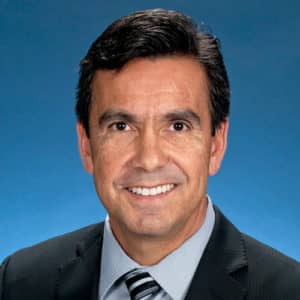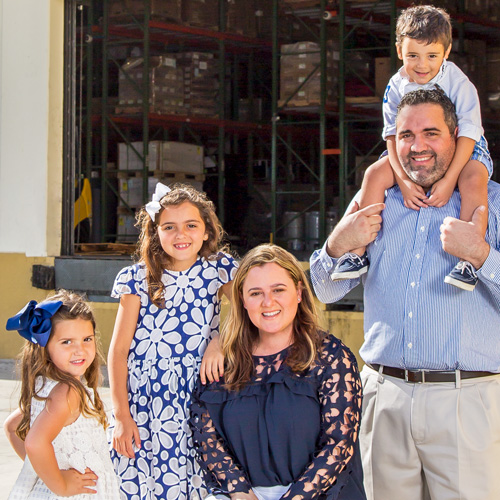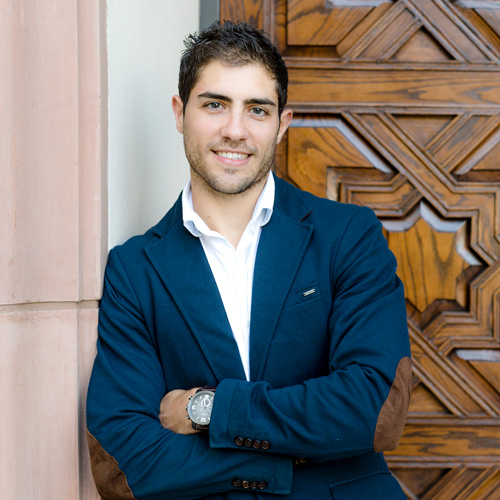
Anthony Salcido is a bit different—eccentric, even—a Latino who is both a leader in finance and an avid surfer. He’s never been fazed by standing out. The ninth of ten children of a carpenter father and a mother who worked in a factory, he was pegged by his father as the one who would break the mold.
“My dad kept saying, ‘Son, I didn’t work my tail off in construction so that none of my kids would go to college. You’re my last hope,’” Salcido recalls.
Sweating on construction sites and plucking out splinters during high school summer breaks was enough real-world experience for Salcido to heed his father’s plea. After becoming the first in his family to graduate from college, he worked in public accounting for seven years, first with KPMG and then with Price Waterhouse. A few years into his tenure with Price Waterhouse, he got a call from a recruiter asking if he’d be interested in moving to New York to work for PepsiCo’s international restaurant division, which included Pizza Hut, KFC, and Taco Bell. It wasn’t a simple decision.
“I grew up in Southern California, and I’m a surfer,” he says. “At first I thought, ‘You’ve gotta be crazy.’ But the more I looked into it, the more it seemed like the right move. That was the turning point in my career that opened my eyes to corporate America.”
After two years at the PepsiCo headquarters in New York (he found some waves to ride in the Hamptons), Salcido and his family made another move to Wichita, Kansas, to work with the Pizza Hut International division. On its face, the transfer was a Middle America, small-city move—“There were practically no Hispanics in Wichita,” Salcido notes. Nevertheless it opened up the world for Salcido. Every year, he would travel at least once to Europe, Asia, and Latin America. It was a dizzying and enthralling experience for Salcido, who had been on a grand total of one plane ride before graduating from college.
“I had no anticipation it would be like that with all the travel,” he says. “I saw all these execs traveling in Europe and living abroad. It seemed normal for them, but for me, it was not normal at all.”
He traveled not just across the continents, but also on a steadily upward trajectory in his career. In 2005, he joined Toyota, where he is currently the vice president and corporate controller. Salcido oversees more than one hundred employees. He is responsible for all the accounting of vehicles and parts sales, and the monthly, quarterly, and annual closes and financial reporting.
There is more than usual on his plate right now because the company is bringing sales and manufacturing together at a single headquarters. Salcido is tasked with moving the people, processes, and systems in accounting from two different states to Plano, Texas. Many employees made the decision not to make the move, which meant there was also a hiring frenzy as Salcido and the company made sure the departing employees knew they were valued for their contributions.
“That’s the giant project I’m working on right now,” he says. “I need to make sure nothing falls through the cracks, because I’m in charge of internal controls.”
“For the longest time, I had my head down, and I was climbing the ladder and raising my family and moving around the country, just working my tail off. I’d noticed the lack of Hispanics, but there wasn’t a lot I could do about it other than hire some folks. Now I feel I’m in more of a position where I can do something.”
Anthony Salcido
Yet, even as he immerses himself in the business of bringing the company’s two branches together, Salcido has been increasing his involvement in trying to bring more Latinos into an industry where there have traditionally been few.
“For the longest time, I had my head down, and I was climbing the ladder and raising my family and moving around the country, just working my tail off,” he says. “I’d noticed the lack of Hispanics, but there wasn’t a lot I could do about it other than hire some folks. Now I feel I’m in more of a position where I can do something.”
It’s not just talk. Since 2008, Salcido has been a board member of the Hispanic Scholarship Fund, which “strives to make college education a top priority for every Latino family across the nation,” according to its website.
Recently, Salcido attended a HSF conference in Silicon Valley where they hosted one hundred of the nation’s top Hispanic students, all of them sponsored by Toyota. Having built a career as a Hispanic without much external help, it’s gratifying for Salcido to see the bright promise of young Hispanics today.
“It was a beautiful sight,” he says of the conference. “These kids were coming from all these top-tier schools—MIT, Stanford, Columbia. It was amazing to see the enthusiasm. That just wasn’t there when I was going through school; Hispanics didn’t have that kind of presence. Part of the change is the sheer volume of the Latino population now. What I also hope is happening is that there will be more and more young Latinos looking for a better life and getting that through education.”

